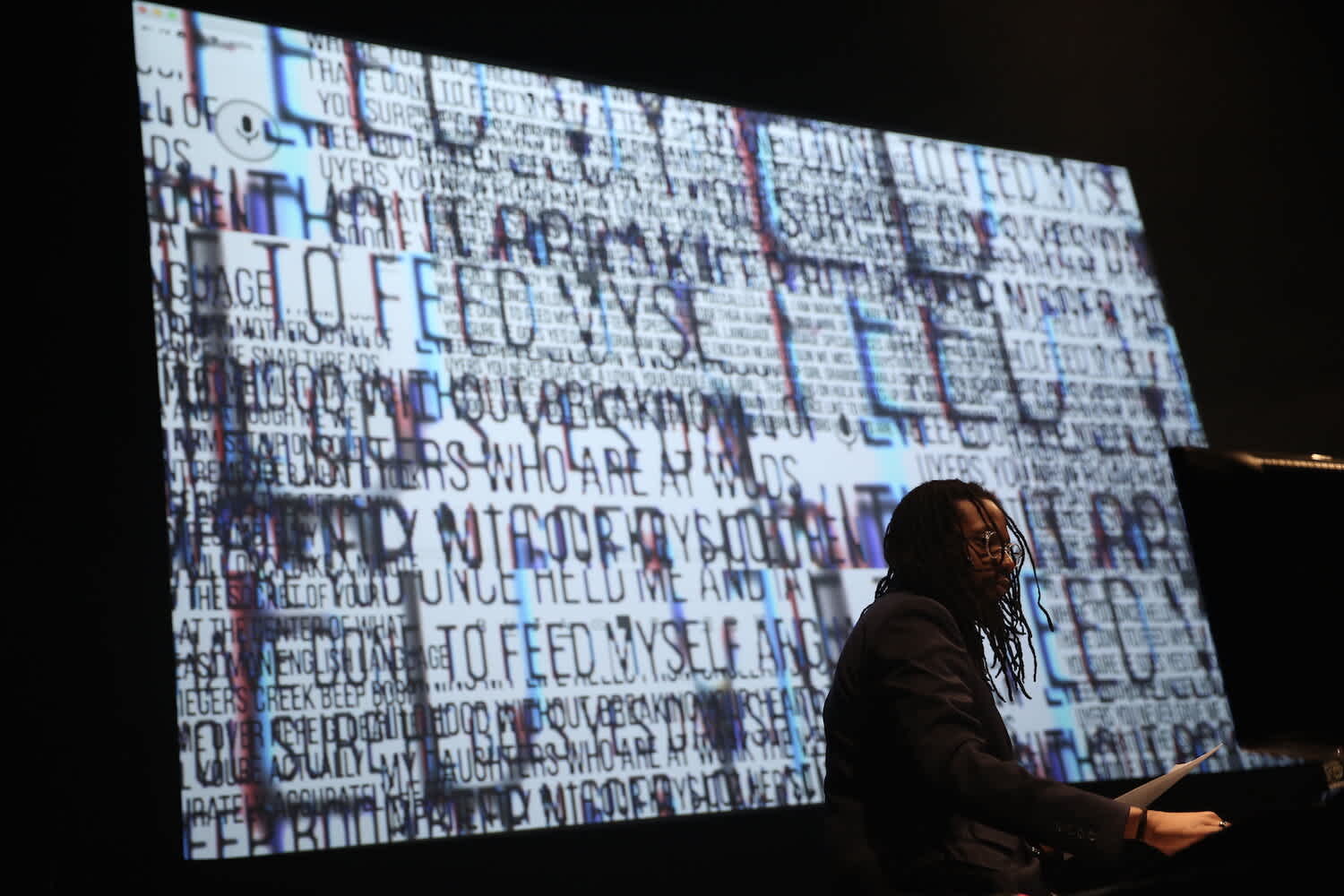
Credits:
Alison Burstein, Curator, Media & Engagement
October 23, 2019
Last week, James Allister Sprang premiered his performance Turning Towards a Radical Listening at The Kitchen. Culminating his five-week residency, this performance in our black box space is the first full realization of a project that the artist has been developing over several years in various contexts.
Sprang has drawn inspiration from a number of writers, researchers, and thinkers while creating Turning Towards a Radical Listening. Additionally, he has collaborated with a range of practitioners to develop specialized software and equipment to bring his vision for this sound-based sculptural installation to life. To give insight into Sprang’s process, this post aggregates a bibliography of texts that have been central to his thinking and a set of digital drawings that act as an invisible support for the work. These materials provide context for both the conceptual research and the formal and material explorations that have informed Turning Towards a Radical Listening.
If you are curious to see how these references come to bear on this project, please join us for a performance on Wednesday, October 23 at 8pm; Friday, October 25 at 8pm; or Saturday, October 26 at 2pm or 8pm to experience the work live.
Bibliography
Kodwo Eshun, More Brilliant Than the Sun, 1998. (Out of print.) Rachel Eliza Griffiths, Lighting the Shadow, 2015. Tracie Morris, Who Do With Words, 2019. Fred Moten and Stefano Harney, The Undercommons: Fugitive Planning and Black Study, 2013. Safiya Noble, Algorithms of Oppression, 2018. M. NourbeSe Philip, Zong!, 2008. Anthony Reed, [Freedom Time](https://www.press.jhu.edu/books/title/10930/freedom-time), 2014. Christina Sharp, In The Wake, 2016. Alexander Weheliye, Habeas Viscus, 2014.
Digital Drawings
For Turning Towards a Radical Listening, Satchel Spencer designed a custom app that siphons the algorithms of Google’s proprietary Speech API (speech-to-text) software. This app allows Sprang to make original digital drawings, the lines of which are populated with text generated by Google’s Speech API. The width and opacity of the lines in each drawing dictate font size and opacity of the subsequent texts. In this way, the app generates aleatory concrete poems, with a unique composition for each performance.